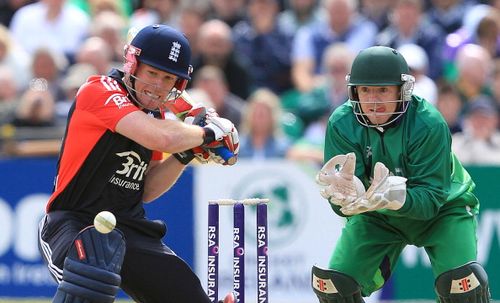
'Poaching' in cricket - Ireland's loss is England's gain

Boyd Rankin
England have become infamous in the last few years for filling their team with South Africans. But the latest trend in English cricket seems to be to deprive Ireland of their best players, and make them turn out for England instead.
Boyd Rankin, without a doubt the best fast bowler Ireland has ever produced, is tall, gets a lot of bounce and bowls reasonably quickly. In short, he is the kind of bowler who could potentially be an asset to any team, more so for an ‘Associate nation’ like Ireland which is looking to get to the next level.
Sadly, Rankin ‘retired’ from the Irish national team last year – a year after he began playing for the England Lions. His goal – to play Test cricket for England. Rankin’s inclusion in the First XI for England’s T20 side against New Zealand brought him a step closer to that goal. He used his height well, getting a wicket in his first over and returning respectable figures of 1/24 in the first T20I.
The big Irishman was also selected for England in their Ashes warm-up match against Essex, alongside Graham Onions and regulars Stuart Broad, Tim Bresnan, James Anderson and Steven Finn. England has a lot of fast bowling talent. Apart from the bowlers mentioned, they have many other options such as Chris Tremlett (who is similar to Rankin in many ways), Stuart Meaker, Jade Dernbach, Ben Stokes and Chris Woakes.
So where does Rankin fit in? Let us assume that he can’t make it to the English Test side (a reasonable assumption since he will turn 29 in July, and is thus older than 3 of England’s top 4 seamers), and is dropped from the limited overs side in a couple of years. He then has to ride out the waiting period (reduced from 4 to 2 years recently) before he can turn out for Ireland again.
This was what happened to stylish left-hander Ed Joyce, whose good performances for Ireland in the 2005 ICC Trophy led to England snapping him up in 2006. Joyce played 17 ODIs (ironically making his debut against Ireland) before England decided to discard him.
Joyce had to wait out the 4 years before returning to the Irish ODI team early in 2011, without having achieved his dream of playing a Test match. He has performed admirably since, averaging an outstanding 45.62 in 19 ODI innings.
Two years later, England set their sights on another Irish batsman, Eoin Morgan, a more unorthodox left-hander. Morgan managed to play 16 Test matches before being dropped. But he has become vital to England’s ODI and T20I plans, and was the captain for the T20 match against New Zealand in which his ex-Irish teammate Rankin debuted.

Eoin Morgan
Morgan averaged 35.42 in ODIs as a young player for Ireland before switching allegiance to England, for whom his ODI average is 38.48. He averages an excellent 35.12 in 36 T20 Internationals, captaining in 3 of those matches. Morgan also captained England in a single ODI against – guess who? Yes, Ireland.
How would Ireland have performed if they had had Morgan in their middle order in the last few years? They have a decent batting line-up already; Morgan’s addition would have helped to take them to the next level.
Going back to Rankin, how important is he to England compared to how important he was to Ireland? Ireland had Rankin leading their attack for five years, so they now have to go back to the drawing board to find a good enough replacement. Needless to say, that’s easier said than done! England, on the other hand, have the whole of a strong domestic circuit to choose their bowlers from.
England’s strategy of recruiting Irish players is similar to big football clubs ‘poaching’ young players from smaller clubs for a pittance. This poaching of young Irish players by England is an alarming trend that doesn’t look like stopping, with more players, including 20-year old left arm spinner George Dockrell, repeatedly being linked with a switch to England. It is almost impossible for a team like Ireland to grow when all their best players are taken away from them.
The big problem for Ireland now is that the main motivation for young Irish cricketers appears to be to play for England. And you can’t really blame the players for wanting to play quality international cricket, including Test cricket, which Ireland are not allowed to play.
Playing for England seems to be the answer to this wish, and the players also make more money in doing so. Moreover, Test cricket is the ultimate form of cricket for most players and it is hardly surprising that some cricketers are ready to switch national teams to achieve their dream.
Irish cricket has come on in leaps and bounds over the last few years, and they have qualified for the 2015 World Cup, as expected. They are arguably now a better batting side than Bangladesh and Zimbabwe, who have Test status.
Cricket Ireland aims to become a Test playing nation by 2020, but the ICC should give them that status much before that. Not only that, they should also allow the Irish players in the England setup to return to the Ireland cricket team without any waiting period. Otherwise, Ireland run the risk of losing more players to England.
Follow me on Twitter at @AshwathSports